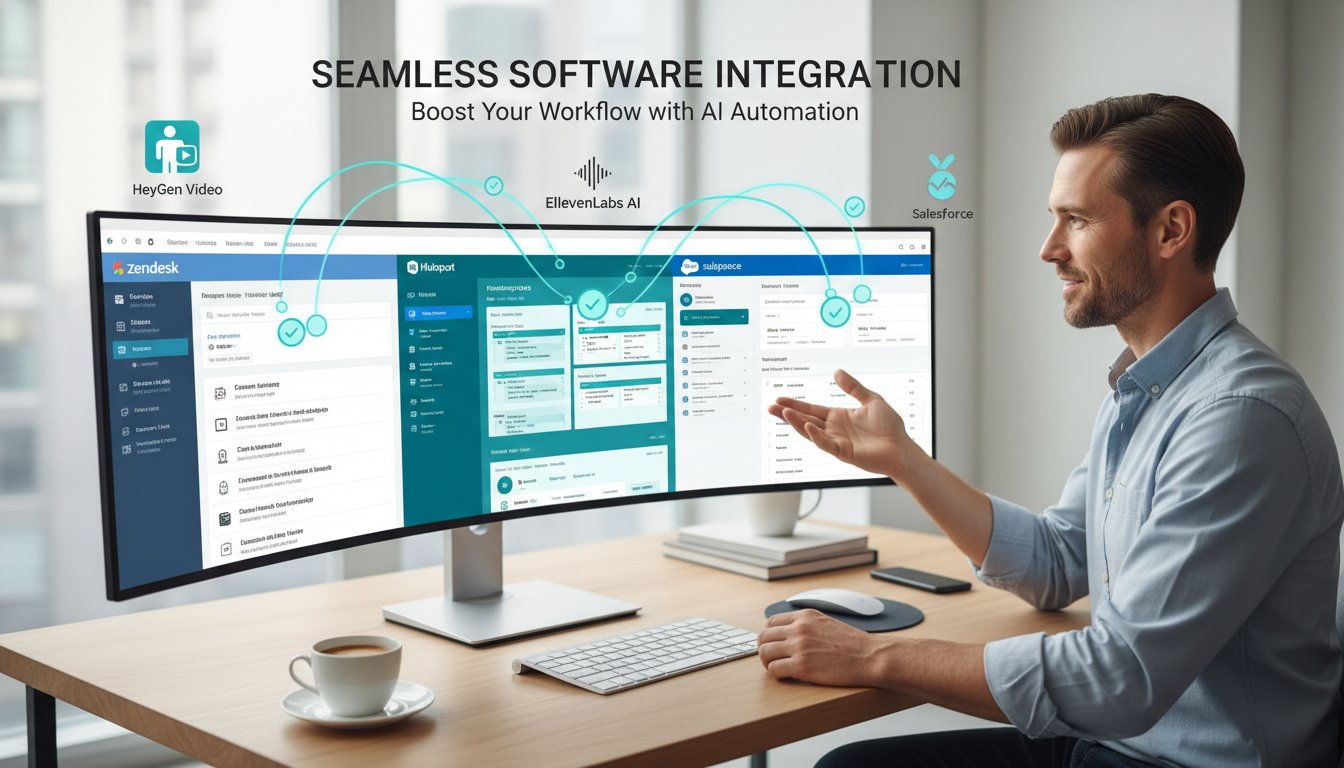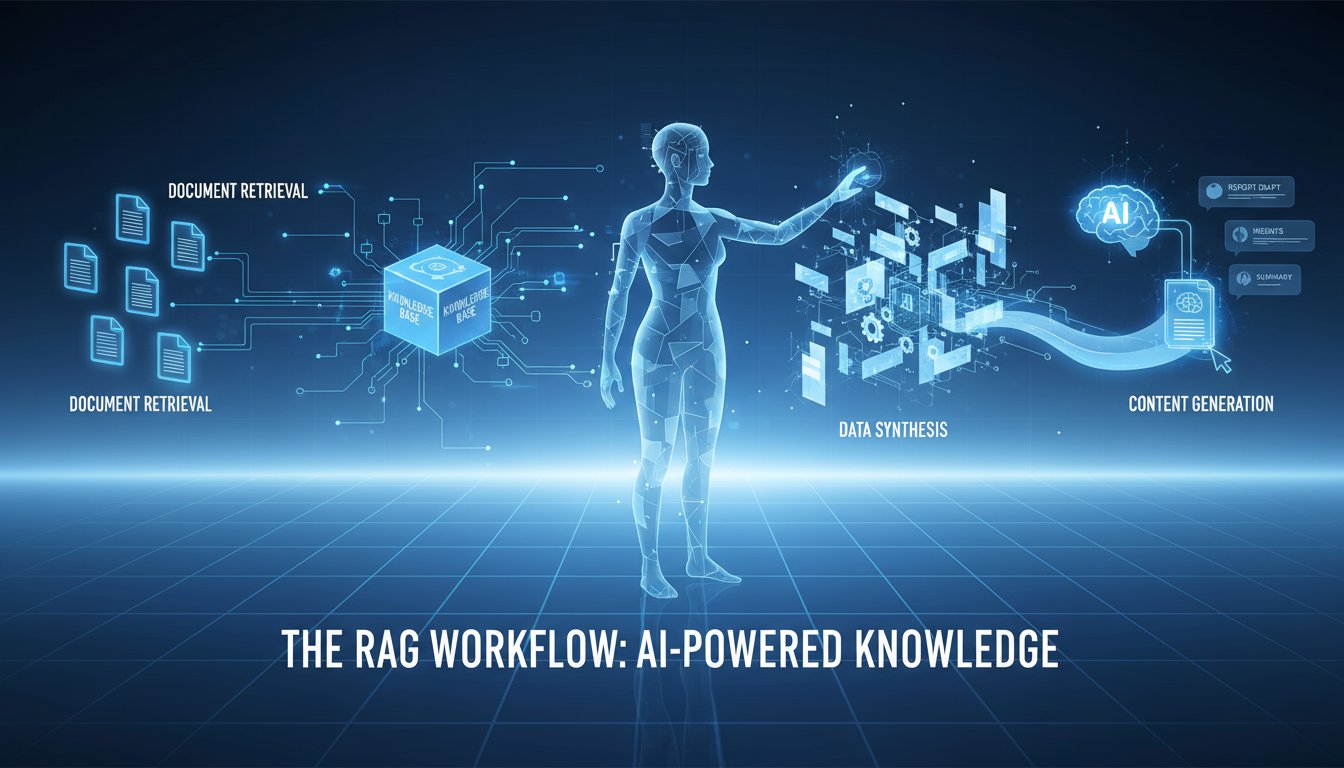The enterprise AI landscape just shifted dramatically. While most organizations struggle with the complexity of deploying production-ready RAG systems—often requiring months of development and specialized expertise—Hitachi Vantara’s new iQ Studio platform promises to compress that timeline to weeks with its no-code approach. But beyond the marketing promises lies a fascinating technical architecture that could fundamentally change how enterprises think about RAG deployment.
This isn’t just another AI platform launch. It’s a strategic response to a critical enterprise pain point: the gap between RAG prototypes that work in demo environments and production systems that can handle 50+ million records with sub-30-second response times. As one enterprise architect recently shared, “We built a beautiful RAG prototype in two weeks, but it took eight months to make it production-ready.” Hitachi’s iQ Studio aims to collapse that timeline entirely.
The implications extend far beyond faster deployment. This platform represents a shift toward what industry analysts are calling “democratized enterprise AI”—where business stakeholders can build sophisticated RAG applications without writing a single line of code. But the real question isn’t whether this approach works; it’s whether it can maintain the performance, security, and scalability demands that enterprise RAG systems require.
In this technical deep-dive, we’ll dissect the architecture behind Hitachi iQ Studio, examine how it addresses the five critical challenges of enterprise RAG deployment, and analyze whether this no-code approach can truly deliver production-grade results. We’ll also explore the broader implications for enterprise AI teams and what this means for the future of RAG development.
The Enterprise RAG Deployment Challenge That No One Talks About
Enterprise RAG deployment faces a fundamental problem that most vendors prefer to ignore: the “valley of death” between proof-of-concept and production. While building a basic RAG system has become relatively straightforward—load documents, create embeddings, implement basic retrieval—scaling to enterprise requirements introduces complexity that breaks most initial architectures.
Consider the recent case study from a Fortune 500 manufacturing company that successfully deployed a RAG system handling over 50 million records across multiple databases. The initial prototype took three weeks to build and worked perfectly with 1,000 test documents. However, scaling to production required eight months of additional development to solve challenges that never appeared in the prototype phase.
The primary bottlenecks weren’t where most teams expected them. Database performance was manageable with proper indexing. Vector similarity search scaled adequately with specialized databases like Milvus. The real challenges emerged in three critical areas that traditional RAG tutorials rarely address:
Data Freshness and Synchronization: Enterprise data changes constantly. Product specifications update hourly, regulatory documents change weekly, and customer information flows in real-time. The manufacturing company discovered that their initial batch-processing approach for document updates created accuracy problems within hours of deployment. Their solution involved implementing hybrid search combining text-based queries with vector search, plus asynchronous caching systems that could handle continuous data updates without performance degradation.
Query Complexity and Context Management: Enterprise users don’t ask simple questions. They ask multi-part queries spanning different data sources: “What are the safety requirements for Product X in European markets, and how do they differ from our current US specifications for similar products?” These queries require sophisticated query translation and multi-hop reasoning capabilities that basic RAG architectures simply cannot handle.
Governance and Compliance: Enterprise RAG systems must provide audit trails, ensure data privacy, manage model versioning, and maintain compliance with industry regulations. The manufacturing company spent three months just implementing the governance layer required for their regulated environment.
These challenges explain why most enterprise RAG projects follow a predictable pattern: initial excitement over rapid prototyping, followed by months of complex engineering work to address production requirements that weren’t apparent during development.
Hitachi iQ Studio’s Technical Architecture: Solving the No-Code Enterprise AI Paradox
Hitachi iQ Studio addresses the enterprise RAG deployment challenge through a sophisticated technical architecture that abstracts complexity without sacrificing capability. Built on NVIDIA’s AI Data Platform reference design, the system provides enterprise-grade performance while maintaining the simplicity that makes no-code development possible.
The core architecture revolves around three interconnected layers that work together to deliver production-ready RAG capabilities:
The Model Context Protocol (MCP) Layer serves as the foundation, providing pre-integrated RAG pipelines that handle the complex orchestration between data sources, vector databases, and language models. Unlike traditional RAG frameworks that require manual configuration of each component, the MCP automatically manages data flow, handles schema translation between different data sources, and optimizes retrieval strategies based on query characteristics.
This layer includes sophisticated query translation capabilities that can decompose complex enterprise queries into multiple sub-queries, execute them across different data sources simultaneously, and synthesize results into coherent responses. The system leverages NVIDIA’s NIM and NeMO Retriever Microservices to handle the heavy computational lifting while abstracting the complexity from users.
The Enterprise Data Integration Layer addresses one of the most challenging aspects of enterprise RAG deployment: connecting to diverse data sources with different schemas, formats, and update frequencies. The platform can vectorize data from object and file storage systems like VSP One, automatically handle schema mapping for different database types, and maintain real-time synchronization with source systems.
The integration layer implements sophisticated chunking strategies that go beyond simple document splitting. It performs semantic chunking that preserves context boundaries, maintains metadata relationships between chunks, and creates hierarchical embeddings that enable both fine-grained and document-level retrieval. This approach solves the common enterprise problem where relevant information spans multiple documents or requires understanding of document relationships.
The Governance and Lifecycle Management Layer provides the enterprise-grade controls that production RAG systems require. This includes model versioning, prompt management, data lineage tracking, and compliance monitoring. The platform maintains detailed audit trails of all queries and responses, implements data privacy controls at the field level, and provides role-based access controls that integrate with existing enterprise identity management systems.
The governance layer also includes sophisticated feedback loops that continuously improve system performance. User interactions, accuracy ratings, and retrieval effectiveness metrics feed back into the system to optimize chunking strategies, refine embedding models, and improve query translation accuracy.
Advanced RAG Optimization Techniques in Production Environments
The transition from prototype to production RAG systems requires implementing advanced optimization techniques that most development teams discover only after encountering performance bottlenecks. Recent enterprise deployments have revealed several critical optimization strategies that can dramatically improve both performance and accuracy.
Hybrid Search Architecture with Dynamic Weighting represents one of the most significant advances in production RAG optimization. Rather than relying solely on vector similarity search, production systems increasingly implement hybrid approaches that combine multiple search strategies. Text-based search handles exact matches and specific terminology, while vector search captures semantic relationships and synonyms.
The key innovation lies in dynamic weighting algorithms that adjust the balance between search strategies based on query characteristics. Simple factual queries might weight text search more heavily, while complex analytical questions benefit from increased vector search emphasis. Advanced implementations use machine learning models trained on query performance data to automatically optimize these weights for specific domains and user patterns.
Asynchronous Query Processing with Intelligent Caching addresses the performance challenges that emerge when RAG systems scale beyond prototype environments. Production systems serving hundreds of concurrent users cannot afford the latency introduced by sequential processing of retrieval, embedding, and generation steps.
Successful implementations use asynchronous architectures that parallelize these operations while maintaining context coherence. The system simultaneously queries multiple data sources, processes embeddings for different document chunks, and begins context preparation before all retrieval operations complete. Intelligent caching systems store frequently accessed embeddings and pre-computed context combinations, reducing response times for common queries from 30+ seconds to under 3 seconds.
Temperature Control and Hallucination Mitigation becomes critical in enterprise environments where accuracy directly impacts business decisions. Production RAG systems implement multiple layers of hallucination prevention, starting with near-zero temperature settings for the language model but extending to sophisticated verification mechanisms.
Advanced implementations include confidence scoring for retrieved documents, source citation requirements that force the model to reference specific document sections, and automated fact-checking against retrieved context. Some systems implement “confidence thresholds” that trigger human review for responses below specified accuracy scores.
Iterative Evaluation and Continuous Optimization distinguishes production RAG systems from prototypes through systematic performance measurement and improvement processes. Rather than one-time testing, production systems implement continuous evaluation frameworks that monitor accuracy, relevance, and user satisfaction metrics in real-time.
These systems maintain evaluation datasets that grow with usage, automatically identify performance degradation patterns, and trigger optimization processes when metrics fall below defined thresholds. Advanced implementations use A/B testing frameworks to continuously experiment with different chunking strategies, embedding models, and retrieval approaches while maintaining service reliability.
The Enterprise Implementation Playbook: Beyond No-Code Promises
While no-code platforms like Hitachi iQ Studio promise simplified deployment, successful enterprise RAG implementation still requires careful planning and strategic decision-making. The platform may abstract technical complexity, but it cannot eliminate the need for thoughtful architecture and deployment strategy.
Data Architecture and Preparation remains the foundation of successful RAG deployment, regardless of the development platform. Enterprise organizations must conduct thorough data audits to identify all relevant information sources, assess data quality and consistency, and establish data governance policies before beginning development.
This preparation phase includes mapping data relationships between different systems, identifying sensitive information that requires special handling, and establishing update frequencies for different data sources. Organizations that skip this preparatory work often discover fundamental architecture problems months into deployment, requiring expensive redesign efforts.
Security and Compliance Framework Design requires early attention in enterprise environments where data sensitivity and regulatory compliance are non-negotiable. Even with no-code platforms, organizations must establish clear policies for data access, model behavior, and audit trail maintenance.
Successful implementations begin with comprehensive security assessments that identify all data flows, access points, and potential vulnerability vectors. They establish role-based access controls that align with existing enterprise security policies and implement monitoring systems that can detect unauthorized access attempts or unusual query patterns.
Performance Testing and Scalability Planning must account for realistic enterprise usage patterns rather than idealized test scenarios. Production RAG systems face unpredictable query loads, complex multi-part questions, and simultaneous access by hundreds of users with different permission levels.
Enterprise teams should conduct load testing with realistic query complexity, simulate peak usage scenarios, and establish performance baselines before deployment. They should also plan for gradual rollout strategies that allow for performance monitoring and optimization before full enterprise deployment.
User Training and Change Management often determines the success or failure of enterprise RAG deployments more than technical architecture decisions. Even the most sophisticated RAG system fails if users don’t understand how to formulate effective queries or interpret system responses appropriately.
Successful implementations include comprehensive user training programs that teach query formulation techniques, explain system capabilities and limitations, and establish protocols for handling uncertain or incomplete responses. They also create feedback mechanisms that allow users to report accuracy problems and suggest system improvements.
The emergence of no-code enterprise RAG platforms like Hitachi iQ Studio represents a significant step toward democratizing AI deployment, but success still requires careful planning, thorough preparation, and ongoing optimization. Organizations that approach these platforms as “AI deployment magic wands” often encounter the same challenges that plague traditional RAG development projects—just with different tools.
Measuring Success: Performance Metrics That Actually Matter
Enterprise RAG deployment success cannot be measured by traditional software metrics alone. While response time and uptime remain important, the unique characteristics of RAG systems require specialized performance indicators that capture both technical performance and business value delivery.
Retrieval Accuracy and Relevance Scoring forms the foundation of RAG performance measurement. Unlike simple search systems where relevance is binary, RAG systems must retrieve documents that provide sufficient context for accurate response generation. Advanced measurement approaches implement multi-tier relevance scoring that evaluates both individual document relevance and collective context completeness.
Production systems typically implement automated relevance scoring using techniques like RAGAS (Retrieval Augmented Generation Assessment) frameworks that measure retrieval precision, context relevance, and answer faithfulness simultaneously. These metrics provide continuous feedback for system optimization and can trigger automatic retraining processes when performance degrades.
Response Quality and Factual Accuracy requires sophisticated measurement approaches that go beyond simple user satisfaction surveys. Production RAG systems implement automated fact-checking mechanisms that compare generated responses against source documents, identify potential inconsistencies, and flag responses that may contain hallucinated information.
Advanced implementations maintain “ground truth” datasets specific to their domain and use these for continuous accuracy assessment. They also implement citation accuracy metrics that verify whether responses correctly reference supporting source material and whether cited sources actually contain the claimed information.
User Adoption and Query Success Rates provide insights into system effectiveness from the user perspective. Production systems track query completion rates, user retry patterns, and session abandonment metrics to identify areas where the system fails to meet user needs.
These metrics often reveal gaps between system capabilities and user expectations that aren’t apparent from technical performance measures alone. For example, high retrieval accuracy combined with low user satisfaction might indicate that the system is technically correct but not providing the type of information users actually need.
Business Impact Measurement ultimately determines ROI for enterprise RAG investments. Successful implementations establish baseline measurements for the business processes that RAG systems are intended to improve, then track improvement metrics over time.
For customer service applications, this might include first-call resolution rates, average handling times, and customer satisfaction scores. For internal knowledge management systems, relevant metrics might include time-to-information, decision-making speed, and reduction in duplicate research efforts.
The most successful enterprise RAG deployments establish comprehensive measurement frameworks before deployment and use these metrics to drive continuous improvement efforts. They recognize that RAG system optimization is an ongoing process rather than a one-time deployment task.
The Future of Enterprise RAG: What Hitachi iQ Studio Reveals About Industry Direction
The launch of platforms like Hitachi iQ Studio signals a broader industry evolution toward abstraction and democratization of enterprise AI deployment. However, the technical architecture choices embedded in these platforms provide insights into where enterprise RAG technology is heading and what capabilities will become standard in the next generation of AI systems.
Agentic AI Integration represents perhaps the most significant evolution visible in Hitachi’s platform architecture. Rather than treating RAG as a standalone retrieval and generation system, iQ Studio positions RAG capabilities within a broader agentic AI framework where AI agents can orchestrate complex workflows that include retrieval, analysis, decision-making, and action execution.
This integration suggests that future enterprise AI systems will move beyond simple question-answering toward autonomous task completion. An AI agent might retrieve relevant product specifications, analyze compliance requirements, generate updated documentation, and automatically submit it for approval—all while maintaining the context awareness and factual grounding that RAG provides.
Multimodal RAG Capabilities are becoming essential as enterprise data increasingly includes video, audio, images, and other non-text formats. The integration with NVIDIA’s AI Data Platform positions iQ Studio to handle multimodal data processing, suggesting that future RAG systems will seamlessly incorporate information from diverse media types.
This evolution addresses a critical limitation of current RAG implementations that struggle with the multimedia nature of modern enterprise information. Technical documentation increasingly includes video demonstrations, product information includes detailed images, and meeting notes may exist as audio recordings. Future RAG systems must handle these diverse information types as naturally as they currently process text documents.
Edge and Sovereign Deployment Models reflect growing enterprise concerns about data sovereignty and latency requirements. Hitachi’s emphasis on on-premises deployment capabilities and local model serving indicates that future RAG systems will provide flexible deployment options that keep sensitive data within enterprise boundaries while maintaining cloud-scale performance.
This trend toward “sovereign AI” deployment models will likely accelerate as organizations become more sophisticated about AI governance and as regulatory frameworks evolve to require local data processing for certain types of sensitive information.
Continuous Learning and Adaptation capabilities built into platforms like iQ Studio suggest that future RAG systems will automatically improve through usage rather than requiring manual optimization. The feedback loops and evaluation frameworks embedded in the platform architecture enable continuous refinement of retrieval strategies, chunking approaches, and response generation techniques.
This evolution toward self-optimizing RAG systems addresses one of the current technology’s biggest limitations: the need for ongoing manual tuning and optimization as data sources evolve and user needs change.
The convergence of these trends points toward a future where enterprise RAG deployment becomes as routine as implementing traditional database applications, with sophisticated AI capabilities abstracted behind user-friendly interfaces while maintaining the performance and governance requirements that enterprise environments demand.
Hitachi iQ Studio represents more than just another AI platform—it’s a glimpse into how enterprise AI deployment will evolve as the technology matures and organizations develop more sophisticated approaches to AI governance and integration. The success or failure of this approach will likely influence the direction of enterprise AI development for years to come, making it a critical development to watch for anyone involved in enterprise AI strategy and implementation.
As enterprises continue to grapple with the complexity of AI deployment while seeking to capture the business value that these technologies promise, platforms like iQ Studio offer a potential path forward that balances sophistication with accessibility. Whether this approach proves sustainable at scale remains to be seen, but the technical architecture and enterprise focus suggest a serious attempt to solve real problems that organizations face in production AI deployment.
The enterprise AI landscape is clearly evolving toward greater abstraction and democratization, but the fundamental challenges of data quality, security, governance, and performance optimization remain. Success in this evolving landscape will require organizations to thoughtfully balance the convenience of no-code platforms with the rigor of enterprise-grade implementation practices. For RAG technology specifically, platforms like Hitachi iQ Studio represent an important step toward making sophisticated retrieval-augmented generation capabilities accessible to a broader range of enterprise users while maintaining the technical sophistication that production deployments require.




